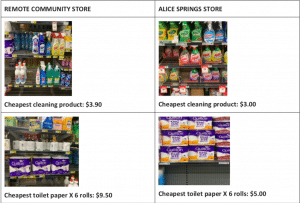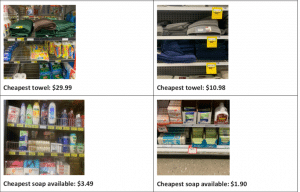Access to basic cleaning and hygiene products are essential in Australia’s efforts to eliminate trachoma in remote Indigenous communities, however residents in those areas can pay up to three times more for items such as towels and soap, an inquiry has heard.
The University of Melbourne’s Indigenous Eye Health Unit (IEH) says 120 remote communities are still at risk of trachoma in Australia, the last developed nation with the disease. It is most often found small children, and after many reinfections (150 – 200) it leads to scarring and in-turned eye lashes in adults.

Trachoma is preventable and persists in areas with poor personal and community hygiene. Further, in the first year of life in an Indigenous community, the average clinic attendance was 21 presentations per child. Almost two thirds of visits were for infections, including upper respiratory, diarrhoea, ear disease, lower respiratory tract infection and skin sores.
Senior engagement officer Mr Karl Hampton outlined the IEH’s concerns in a submission to the House of Representatives Standing Committee on Indigenous Affairs’ Inquiry into food pricing and food security in remote Indigenous communities. Established by Minister for Indigenous Australians Mr Ken Wyatt, many submissions have focused on exorbitant prices and price-gouging.
Hampton stated that local stores play a role in providing affordable hygiene and cleaning products to improve health in remote communities.
However, on remote community visits over several years, the IEH has found products are far more expensive than what they may be in regional centres and capital cities. Exacerbating the issue is the fact many people in these areas have low incomes, pushing some essential products out of reach.
Hampton provided several examples comparing remote community stores to a store in Alice Springs. The cheapest towel in the remote store was $29.99 while in Alice Springs it was $10.98. For soap, those figures were $3.49 versus $1.90; x6 toilet paper was $9.50 versus $5; and the cheapest cleaning products were $3.90 versus $3.

“IEH are aware of the efforts of some store chains operating in remote Aboriginal communities to reduce the costs of health and hygiene products and increase the access to these products to residents, however despite these efforts these stores still require subsidised funding to offset any loss of income for the store,” Hampton said.
“We recognise the operational cost of running these remote stores such as power and water and staff wages is a lot higher than those in regional centres and therefore having a significant impact of the cost of products sold by the store.”

He also said it appears much product pricing is dependent on what the stores and suppliers set, meaning community stores are restricted to shop around and negotiate with suppliers.
“More affordable hygiene and cleaning products remote stores will increase use of these products to improve health,” Hampton added.
In its submission, the IEH made five recommendation to the Senate committee, including:
- Focus on reasonable price and regular availability for all essential hygiene and cleaning products.
- Use same strategies to healthy food marketing by utilising Product, Price, Placement and Promotion in remote stores.
- Licencing agreements for remote stores to include both priority access to Healthy Food AND Hygiene Products.
- Increase capacity of remote store committee members to understand link between hygiene and infectious illness.
- Stronger and more meaningful governance training for local Aboriginal people on store committees along with opportunities for them to be engaged higher up the store governance structure and decision making process.




